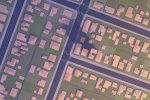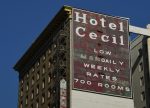We can all agree that public parks and other public spaces are great. We gather with family and friends for a game of touch football in the park and a picnic in the shade of lovely trees. We walk our dogs, enjoy the fresh air and connect with nature. We rest for a moment on public benches that line the sidewalk. We pop into stores to use the public restrooms while we’re out and about. We camp in state parks for a little adventure and wilderness respite. It’s convenient, fun and brings us together at no cost. I love public space.
However, if you dig a little deeper, you’ll discover that public spaces are only selectively public.
What does it mean for a space to be open to the public? What does “public” mean? Who is the public?
Public (adjective): open to all persons.
Public (noun): the people constituting a community, state, or nation.
By these definitions, any space that is “open to the public” is open to the people who constitute the community. So really, those in control of public spaces decide which individuals are part of the community when they decide who has access to the space.
Taco Bell is a private institution, but their restaurants offer public restroom facilities. Daniel Markey, who works at Taco Bell, disclosed that the restrooms aren’t truly public. When an individual comes in looking to use the restroom, Markey has been instructed to unlock the bathroom for “people who don’t look homeless.”
Once, a woman who was known to the Taco Bell staff to be a homeless person came in looking to use the restroom. Despite his training, Markey opened the bathroom for her.
“She was there for half an hour and I was told not to let her in because she does drugs and bathes in the sink. Then my boss told me to clean the bathroom again. She didn’t leave a mess … there was no evidence that she did drugs there,” said Markey.
Taco Bell and other institutions might advertise a public restroom, but the truth is, their definition of the public does not include homeless individuals or individuals who “look homeless.” With this subjective definition of public, classist and racist biases inevitably will seep into the determination of the public.
Further, this example begs another question: Why did the homeless woman need to bathe in the Taco Bell restroom in the first place? Not only are public spaces somewhat exclusive, but there just aren’t enough truly public facilities available.
Shouldn’t hygiene be a human right? With no truly public hygiene facilities, individuals without private homes are forced to sneak into semi-public bathrooms and bathe in sinks.
Taco Bell is not alone in its anti-homelessness design. Parks, benches and other places are often designed and regulated with anti-homelessness in mind. Hostile architecture is a term used to describe spaces and facilities designed to prevent homeless individuals from taking refuge there.
Benches with armrests between every seat prevent homeless individuals from lying down. Spikes that stick up from the sidewalk might look like modern art but are actually meant to ward off homeless individuals who might otherwise rest here.
Benches at train stations tilt slightly downward, making it physically impossible to lie down. An underground tunnel that plays music on surround-sound speakers is fun in the daytime, but stops homeless people from sleeping there at night. Anti-loitering laws and vagrancy laws prevent simply existing in some spaces.
State campgrounds do not allow tenting for more than 14 consecutive days, even if the park patron is paying. This is a deliberate rule to prevent individuals from living there semi-permanently.
One could certainly make the argument that a state campground shouldn’t be a permanent home, nor a park bench a permanent bed. But again, this begs the question as to where unhoused individuals can legally go.
Public spaces ask homeless people not to enter. Private spaces do the same. The design and regulation of society implies that homeless individuals, rather than the phenomenon of homelessness itself, ought to be eradicated.
I believe that we should work toward ending homelessness. But we need to do so from the ground up, creating opportunities for homeless individuals to find steady jobs and therefore steady incomes and housing, but in the meantime, unhoused people are still people. Unhoused people deserve access to water, food, proper hygiene, a comfortable place to sleep and the same free access to public spaces that housed individuals enjoy.
If people without homes can’t sleep in public, where can they sleep? Hostile architecture essentially denies the existence of homeless people. Their mere attempts to exist in public is categorized as criminal behavior.
Homeless shelters and subsidized housing are important resources, but there aren’t enough of them. We need to work toward the expansion of public resources for homeless individuals. In the meantime, let’s not report homeless individuals for loitering, bathing in sinks or sleeping on public benches. As regulators of the public, we ought to show a little empathy.

















